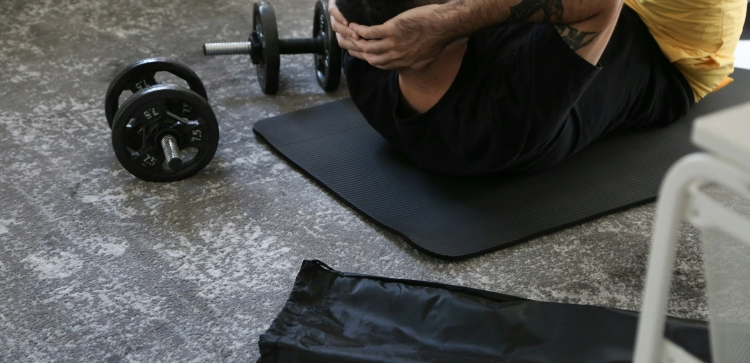Mastering Climbing Endurance: A Comprehensive Guide

Embarking on the journey of climbing involves more than just physical strength and technical skills; it requires endurance to sustain effort over extended periods. Whether you're tackling general climbs or engaging in long routes, building endurance is crucial for success on the rock. This comprehensive guide explores effective strategies and training methods to enhance climbing endurance, ensuring that climbers can conquer longer climbs with resilience and stamina.
- Understanding Climbing Endurance
- Definition And Importance
- Importance Of Climbing Endurance
- Differentiating Endurance From Strength
- Balancing Strength And Endurance
- Training Methods For Climbing Endurance
- Aerobic Endurance Training
- Cardiovascular Conditioning
- Steady-State Aerobic Climbing
- High-Intensity Interval Training (HIIT) - Power Endurance Exercises
- Campus Board Workouts
- Specific Endurance Training
- Supplementary Training For Climbing Endurance
- Addressing Common Questions And Concerns
- How Often Should Endurance Training Be Incorporated?
- Can Endurance Training Improve Overall Climbing Performance?
- What Role Does Nutrition Play In Endurance Training?
- Conclusion: Mastering Endurance For Climbing Success
Understanding Climbing Endurance
Definition and Importance
Climbing endurance refers to the ability to sustain physical effort during an extended climb. It plays a pivotal role in conquering longer routes, preventing fatigue, and maintaining performance throughout the ascent. Endurance is a key component for climbers aiming to tackle long routes, multi-pitch climbs, big wall routes, or sustained bouldering sessions.
Importance of Climbing Endurance
Endurance is essential for facing the challenges posed by lengthy climbs. It allows climbers to maintain a steady pace, delay the onset of fatigue, and sustain performance through various climbing styles and terrains.
Differentiating Endurance from Strength
While strength is essential in climbing, endurance involves a different set of physical and mental challenges. Strength is the capacity for powerful moves, while endurance is the ability to maintain a consistent level of effort over an extended period. Building climbing endurance requires specific training tailored to the demands of sustained climbing.
Balancing Strength and Endurance
Understanding the interplay between strength and endurance is crucial. While strength helps with powerful moves, endurance ensures that these moves can be sustained over a more extended period. Striking a balance between the two is key for overall climbing performance.
Training Methods for Climbing Endurance
Aerobic Endurance Training
Cardiovascular Conditioning
Aerobic endurance forms the foundation for climbing endurance. Cardiovascular conditioning, through activities like running, cycling, or hiking, enhances overall cardiovascular fitness. Improved cardiovascular health translates to better oxygen delivery to muscles during climbs, delaying the onset of fatigue.
Cross-Training for Cardiovascular Health:
Incorporating various cardiovascular activities ensures a well-rounded approach. Activities like swimming and cycling not only enhance endurance but also provide a break from climbing-specific movements.
Steady-State Aerobic Climbing
Incorporating steady-state aerobic climbing into training involves sustained, moderate-intensity climbing for an extended duration. This mirrors the demands of longer climbs, gradually building endurance capacity.
Techniques for Steady-State Climbing:
Focus on maintaining a consistent pace and controlled breathing during steady-state climbs. This helps simulate the conditions of longer routes and prepares climbers for sustained efforts.
High-Intensity Interval Training (HIIT) - Power Endurance Exercises
High-Intensity Interval Training (HIIT) is a valuable method for building power endurance. This involves alternating between short bursts of intense climbing and periods of rest or lower-intensity climbing.
Structuring HIIT Sessions:
Design HIIT sessions to mimic the intensity fluctuations encountered on sustained climbs. Short, intense bursts followed by brief rest periods help improve power endurance and recovery capabilities.
Campus Board Workouts
Campus board workouts are effective for both strength and power endurance. Incorporating dynamic movements on a campus board challenges the climber's upper body and grip strength while also engaging cardiovascular systems.
Progressive Campus Board Trianing:
Gradually increase the complexity of campus board workouts. This progression ensures a continuous challenge, promoting strength and power endurance development over time.
Specific Endurance Training
Simulating Climbing Routes
Tailoring training to specific climbing routes is crucial for event-specific endurance. Climbers can mimic the characteristics of their target routes during training sessions.
Route Replication Techniques:
Identify key features of target routes, such as hold types, angles, and movement patterns. Replicate these features in training to enhance muscle memory and specific endurance.
Long Climbing Sessions
Dedicated long climbing sessions on varied terrain contribute to overall climbing endurance. Spending extended periods on the wall or rock face enhances mental resilience, adaptability, and the ability to sustain effort.
Progressive Long Session Approach:
Start with moderately long sessions and gradually increase the duration. This progressive approach helps acclimate the body to prolonged climbing efforts and fosters mental toughness.
Supplementary Training for Climbing Endurance
Strength Training
While the focus is on endurance, maintaining strength remains essential. Integrating strength training exercises, particularly for the core, forearms, and antagonistic muscles, supports overall climbing performance.
Strategic Strength Exercises:
Choose strength exercises that complement endurance training. Core exercises, fingerboard workouts, and antagonist muscle training contribute to a balanced and resilient climbing physique.
Flexibility and Mobility
Ensuring optimal flexibility and mobility is often overlooked but vital for climbing endurance. Incorporating stretching routines and mobility exercises helps climbers move efficiently, reducing the risk of injuries and enhancing endurance by promoting fluid movement.
Dynamic Warm-ups and Stretching:
Prioritize dynamic warm-up routines before climbing sessions. Include stretching exercises that target major muscle groups involved in climbing movements, enhancing flexibility and reducing injury risk.
Recovery Strategies
Prioritizing recovery is integral to sustainable endurance training. Adequate sleep, proper nutrition, and active recovery techniques, such as foam rolling and stretching, play a crucial role in preventing burnout and promoting long-term endurance gains.
Holistic Recovery Approach:
Emphasize the importance of sleep and nutrition as key components of recovery. Active recovery techniques, including massage and mobility work, aid in muscle recovery and overall well-being.
Addressing Common Questions and Concerns
How Often Should Endurance Training be Incorporated?
The frequency of endurance training varies based on individual goals, current fitness levels, and climbing aspirations. For beginners, 2-3 endurance-focused sessions per week may suffice, while intermediate and advanced climbers could benefit from a mix of aerobic conditioning, HIIT, and specific endurance training sessions.
It's crucial to align the frequency of endurance training with personal climbing goals. Consider factors such as upcoming climbs, current fitness level, and the desired level of endurance. Tailoring the training frequency ensures that it complements individual aspirations and contributes effectively to climbing progress.
Can Endurance Training Improve Overall Climbing Performance?
Endurance training significantly improves overall climbing performance. This improvement is evident in various aspects of a climber's skill set. Firstly, it allows climbers to tackle longer and more challenging routes with increased stamina and efficiency in movement. The ability to sustain physical effort over extended periods is crucial for conquering demanding climbs.
Beyond the physical benefits, endurance training provides a substantial confidence boost. Climbers develop confidence in their abilities, leading them to attempt and succeed in routes they might have deemed too challenging without enhanced endurance. This newfound confidence extends beyond climbing, influencing their approach to challenges in different aspects of life.
Mental resilience is another key outcome of endurance training. Climbers foster a focused mindset during climbs, enhancing their ability to navigate challenges and adapt to unexpected obstacles. This mental toughness is instrumental in sustaining performance during prolonged climbs.
Energy conservation is optimized through endurance training, allowing climbers to strategically pace themselves and manage energy more effectively. This is essential for maintaining stamina during critical sections without succumbing to premature fatigue.
The benefits of endurance training cascade into various interconnected aspects, creating a positive ripple effect. Increased confidence leads to mental toughness, adaptability to different climbing styles, enhanced focus, and an overall enjoyment of climbing experiences. Climbers become more versatile, capable, and fulfilled as they conquer longer routes with resilience and confidence.
What Role Does Nutrition Play in Endurance Training?
Nutrition is pivotal in supporting climbing endurance. Maintaining energy levels, staying hydrated, and having a balanced diet with a focus on carbohydrates and protein are crucial. Pre-climb nutrition involves complex carbohydrates for sustained energy and moderate protein for muscle support. Hydration before climbing prevents early fatigue.
During climbs, regular fluid intake, especially with electrolyte-rich drinks, maintains electrolyte balance. Steady-state climbing sessions in training mimic sustained efforts during climbs, enhancing endurance. Post-climb recovery meals replenish energy stores and aid muscle recovery, combining carbohydrates and protein.
The role of nutrition extends to preventing fatigue, with carbohydrates providing sustained energy release and protein supporting muscle endurance. Nutrient timing, balanced diet, and proper hydration are essential for optimizing climbing performance.
Conclusion: Mastering Endurance for Climbing Success
Climbing endurance is a dynamic skill that evolves with targeted training and commitment. Incorporating a well-rounded approach, including aerobic conditioning, HIIT, specific endurance training, strength exercises, and recovery strategies, fosters comprehensive endurance development. As climbers embrace the journey of building endurance, they unlock the potential to conquer longer climbs, explore challenging routes, and elevate their climbing prowess.












